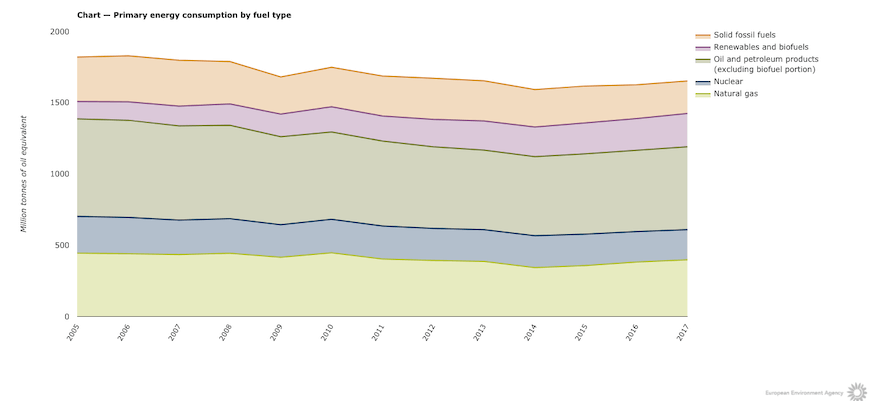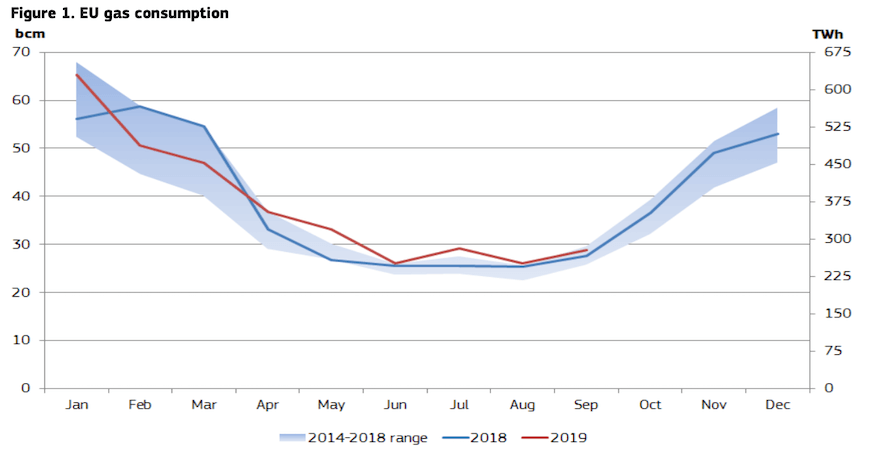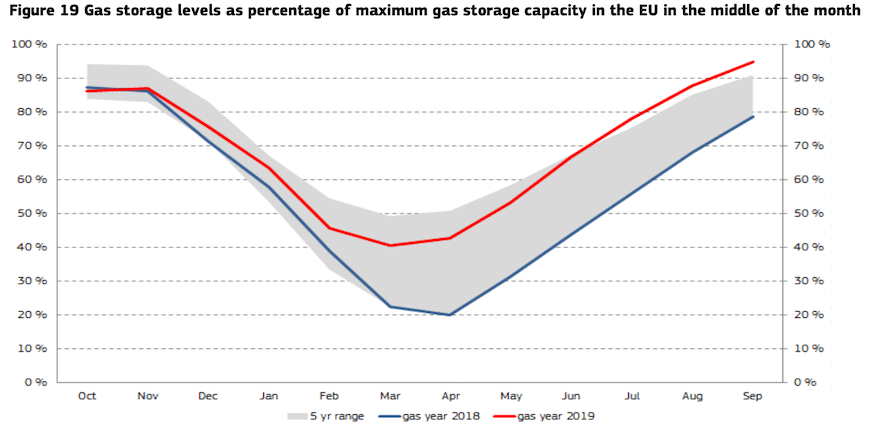
Natural gas is a non-renewable, odorless, colorless, flammable and non-toxic hydrocarbon. It accounts for nearly 25% of the EU’s energy consumption – according to Eurostat.
And it is growing. Almost every household uses it and, fortunately, natural gas can be stored quite efficiently – much better than renewables.
But the question is how natural gas is stored, how big the natural gas storage capacity in the European Union is and what the most common natural gas storage facilities are.

Natural gas storage
Natural gas is a commodity that can be stored for an indefinite period of time. Our article “what is natural gas” explains how exploration, production and transportation of natural gas happens. It takes time.
That is why countries buy much more than they need: they can store it for a long period of time. If the world has a lot of natural gas stored, the prices will go down, because the natural gas storage facilities are full.
But what determines if the storages are full?
- Geopolitical situation
- Environmental costs
- Extreme economic or weather conditions
- Taxes
- National energy structures
These are the most common natural gas price influencing factors – especially the weather. If the winter is cold, the storages will be empty. If the winter is warm, we do not use as much natural gas, and the storages will be full.


The natural gas reaches its final destination through an international pipeline network or – if it is not possible – in tankers.
And when it arrives at the final destination, a part of it is not needed right away. That is when it is injected into natural gas storage facilities.
How is natural gas stored?

There are two kinds of natural gas storages:
- Peak load storage
- Base load storage
The difference between the two is deliverability.
The base load storage is for meeting seasonal demand. The base load delivery rates are low – the natural gas can be extracted each day, but in limited quantities. In contrast, the peak load storage has a high-deliverability for short periods of time. Basically, it is an insurance against unforeseen supply needs.
There are two methods for storing natural gas:
- Underground gas storage
- LNG (liquefied natural gas)
LNG can be shipped and stored in liquid form. It takes up much less space than gaseous natural gas. It is shipped mostly on the seas.
Most of the natural gas is stored in underground gas storages. But what storage facilities are there?
Natural gas storage facilities
For LNG there are liquefied natural gas storage tanks with the ability to store gas at the very low temperature of -162 °C.
On the other hand, there are three main types of underground natural gas storage facilities:
- Salt cavern storage
- Aquifer
- Depleted reservoirs
Natural gas is injected into the underground storages, and as more natural gas is added, more pressure is building up. It means that the underground facility becomes a sort of pressurized natural gas container.
More natural gas means more pressure, so the extraction is easier. If the natural gas level drops below a certain amount, there is no pressure, so the extraction is difficult. That is why there is a certain amount of gas that may never be extracted.
The most common underground natural gas storages are depleted gas reservoirs. They account for 80-90% of the total natural gas underground storage.
According to figures published by Gas Infrastructure Europe, the operational EU storage capacity amounted to 1,131 TWh (roughly 100 bcm) by the end of 2018.
At EU level the storages would cover only one third of the average winter consumption, while in some countries this coverage ratio is less than 10%. The cross-country comparison of gas storage filling rates only makes sense if we take into account the local gas consumption.
Natural gas inventory – Conclusion
Natural gas accounts for almost 25% of the EU’s energy consumption.
There are a lot of natural gas storage influencing factors:
- Geopolitical situation
- Environmental costs
- Extreme economic conditions
- Taxes
- National energy structures
But the most important factor is the weather. If the winter is cold, the storages will be empty. If the winter is warm, we don’t use as much natural gas, and the storages will be full.
There are two methods for storing natural gas:
- Underground gas storage
- LNG (liquefied natural gas)
The most common underground natural gas storage facilities are depleted gas reservoirs. They account for 80-90% of the total natural gas underground storage.
